Uncategorized
Scathing auditor general reports underscore political realities
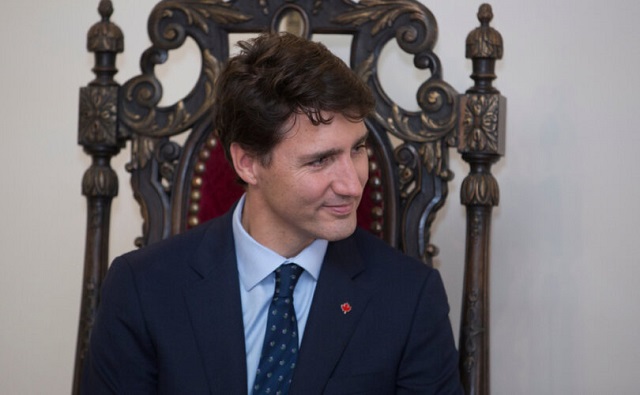
From the Fraser Institute
By Jake Fuss
Nearly 20 per cent of the SDTC projects examined by the AG were in fact ineligible (based on the government’s own rules) for funding, with a total price tag of $59 million. There were also 90 instances where the SDTC ignored conflict of interest provisions while awarding $76 million to various projects. Indeed, the AG found 63 cases where SDTC agency directors voted in favour of payments to companies in which they had declared interests.
If you needed more proof that the Trudeau government is misusing taxpayer money, the auditor general (AG) just released two scathing reports about improper contracting practices, conflict of interest, and funding provided for ineligible projects. Clearly, politicians and bureaucrats in Ottawa do not always act in the best interest of Canadians.
According to the first AG report, Sustainable Development Technology Canada (SDTC), the federal agency responsible for funding green technology projects, demonstrated “significant lapses… in governance and stewardship of public funds.” Nearly 20 per cent of the SDTC projects examined by the AG were in fact ineligible (based on the government’s own rules) for funding, with a total price tag of $59 million. There were also 90 instances where the SDTC ignored conflict of interest provisions while awarding $76 million to various projects. Indeed, the AG found 63 cases where SDTC agency directors voted in favour of payments to companies in which they had declared interests.
The second AG report focused on 97 contracts totalling $209 million awarded by the federal government to the McKinsey & Company consulting firm from 2011 to 2023. According to the AG, the government demonstrated “frequent disregard for procurement policies and guidance and that contracting practices often did not demonstrate value for money.” About 70 per cent of these contracts were awarded non-competitively—meaning no other companies were permitted to bid on the contracts.
These findings also follow an earlier report in February that found the federal government “repeatedly failed to follow good management practices in the contracting, development, and implementation” of the ArriveCAN mobile app, which cost Canadian taxpayers at least $59.5 million.
While the Trudeau government’s record-high levels of spending have made it clear that taxpayer money is being dished out left and right without much regard for the consequences for future generations of Canadians, the AG reports reveal chronic mismanagement, little accountability, and decision-makers acting in their own interests.
Government officials are handing huge sums of taxpayer money to people or companies who spend it without proper transparency or oversight. When considering these findings, Canadians should be skeptical of any politician or commentator who downplays government excesses or says we can’t reduce federal spending.
It’s also naïve to think that politicians and bureaucrats are benevolent civil servants who simply want to make the world a better place. In reality, like most people, they’re human beings motivated by self-interest.
James Buchanan, who won the Nobel Prize in economics in 1986, explained these concepts when pioneering a branch of economics called Public Choice Theory, which pays particular attention to the incentives policymakers face.
Politicians do not always act in the best interest of their constituents, and bureaucrats do not always act in the best interests of the public.
Why? Because it’s often in their interest to make decisions that benefit themselves, family members, friends or other cronies. If you decide to give money to companies despite a conflict of interest or if you award contracts to friends, you’re not making decisions in the best interest of society. People don’t suddenly become selfless when they enter the government sector. They respond to the same incentives as everyone else. The latest AG reports underscore this reality.
Author:
Uncategorized
Cost of bureaucracy balloons 80 per cent in 10 years: Public Accounts

The cost of the bureaucracy increased by $6 billion last year, according to newly released numbers in Public Accounts disclosures. The Canadian Taxpayers Federation is calling on Prime Minister Mark Carney to immediately shrink the bureaucracy.
“The Public Accounts show the cost of the federal bureaucracy is out of control,” said Franco Terrazzano, CTF Federal Director. “Tinkering around the edges won’t cut it, Carney needs to take urgent action to shrink the bloated federal bureaucracy.”
The federal bureaucracy cost taxpayers $71.4 billion in 2024-25, according to the Public Accounts. The cost of the federal bureaucracy increased by $6 billion, or more than nine per cent, over the last year.
The federal bureaucracy cost taxpayers $39.6 billion in 2015-16, according to the Public Accounts. That means the cost of the federal bureaucracy increased 80 per cent over the last 10 years. The government added 99,000 extra bureaucrats between 2015-16 and 2024-25.
Half of Canadians say federal services have gotten worse since 2016, despite the massive increase in the federal bureaucracy, according to a Leger poll.
Not only has the size of the bureaucracy increased, the cost of consultants, contractors and outsourcing has increased as well. The government spent $23.1 billion on “professional and special services” last year, according to the Public Accounts. That’s an 11 per cent increase over the previous year. The government’s spending on professional and special services more than doubled since 2015-16.
“Taxpayers should not be paying way more for in-house government bureaucrats and way more for outside help,” Terrazzano said. “Mere promises to find minor savings in the federal bureaucracy won’t fix Canada’s finances.
“Taxpayers need Carney to take urgent action and significantly cut the number of bureaucrats now.”
Table: Cost of bureaucracy and professional and special services, Public Accounts
| Year | Bureaucracy | Professional and special services |
|
$71,369,677,000 |
$23,145,218,000 |
|
|
$65,326,643,000 |
$20,771,477,000 |
|
|
$56,467,851,000 |
$18,591,373,000 |
|
|
$60,676,243,000 |
$17,511,078,000 |
|
|
$52,984,272,000 |
$14,720,455,000 |
|
|
$46,349,166,000 |
$13,334,341,000 |
|
|
$46,131,628,000 |
$12,940,395,000 |
|
|
$45,262,821,000 |
$12,950,619,000 |
|
|
$38,909,594,000 |
$11,910,257,000 |
|
|
$39,616,656,000 |
$11,082,974,000 |
Uncategorized
New report warns WHO health rules erode Canada’s democracy and Charter rights
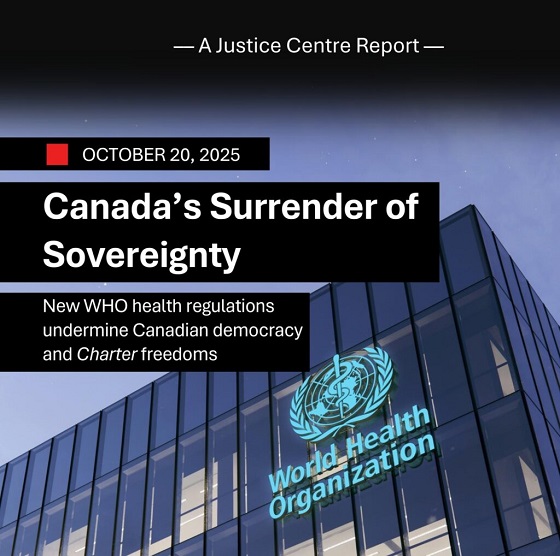
The Justice Centre for Constitutional Freedoms has released a new report titled Canada’s Surrender of Sovereignty: New WHO health regulations undermine Canadian democracy and Charter freedoms. Authored by Nigel Hannaford, a veteran journalist and researcher, the report warns that Canada’s acceptance of the World Health Organization’s (WHO) revised International Health Regulations (IHR) represents a serious erosion of national independence and democratic accountability.
The IHR amendments, which took effect on September 19, 2025, authorize the WHO Director-General to declare global “health emergencies” that could require Canada to follow directives from bureaucrats in Geneva, bypassing the House of Commons and the will of Canadian voters.
The WHO regards these regulations as “binding,” despite having no ability or legal authority to impose such regulations. Even so, Canada is opting to accept the regulations as binding.
By accepting the WHO’s revised IHR, the report explains, Canada has relinquished its own control over future health crises and instead has agreed to let the WHO determine when a “pandemic emergency” exists and what Canada must do to respond to it, after which Canada must report back to the WHO.
In fact, under these International Health Regulations, the WHO could demand countries like Canada impose stringent freedom-violating health policies, such as lockdowns, vaccine mandates, or travel restrictions without debate, evidence review, or public accountability, the report explains.
Once the WHO declares a “Pandemic Emergency,” member states are obligated to implement such emergency measures “without delay” for a minimum of three months.
Importantly, following these WHO directives would undermine government accountability as politicians may hide behind international “commitments” to justify their actions as “simply following international rules,” the report warns.
Canada should instead withdraw from the revised IHR, following the example of countries like Germany, Austria, Italy, Czech Republic, and the United States. The report recommends continued international cooperation without surrendering control over domestic health policies.
Constitutional lawyer Allison Pejovic said, “[b]y treating WHO edicts as binding, the federal government has effectively placed Canadian sovereignty on loan to an unelected international body.”
“Such directives, if enforced, would likely violate Canadians’ Charter rights and freedoms,” she added.
Mr. Hannaford agreed, saying, “Canada’s health policies must be made in Canada. No free and democratic nation should outsource its emergency powers to unelected bureaucrats in Geneva.”
The Justice Centre urges Canadians to contact their Members of Parliament and demand they support withdrawing from the revised IHR to restore Canadian sovereignty and reject blind compliance with WHO directives.
-

 Agriculture2 days ago
Agriculture2 days agoHealth Canada indefinitely pauses plan to sell unlabeled cloned meat after massive public backlash
-

 Energy16 hours ago
Energy16 hours agoPoilievre says West Coast Pipeline MOU is no guarantee
-

 Carbon Tax19 hours ago
Carbon Tax19 hours agoCanadian energy policies undermine a century of North American integration
-
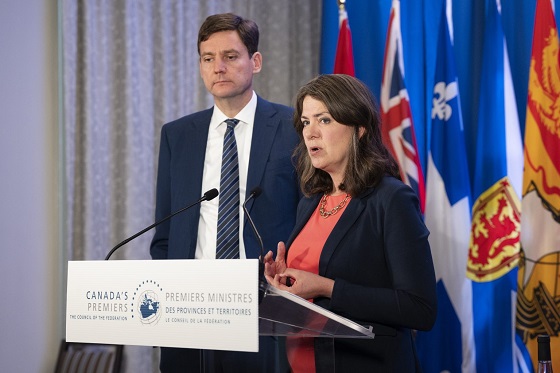
 Alberta16 hours ago
Alberta16 hours agoWest Coast Pipeline MOU: A good first step, but project dead on arrival without Eby’s assent
-
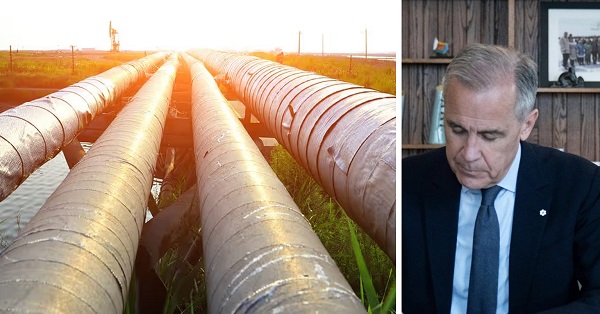
 Energy15 hours ago
Energy15 hours agoWill the New West Coast Pipeline MoU Lead to Results? Almost Certainly Not According to AI
-
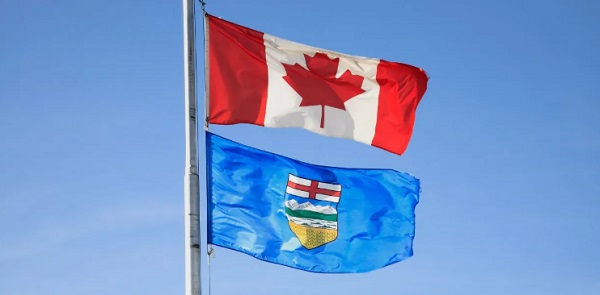
 Alberta14 hours ago
Alberta14 hours agoCarney forces Alberta to pay a steep price for the West Coast Pipeline MOU
-

 Alberta18 hours ago
Alberta18 hours agoAlberta and Ottawa ink landmark energy agreement
-

 Crime2 days ago
Crime2 days agoFBI Seizes $13-Million Mercedes Unicorn From Ryan Wedding’s Narco Network






